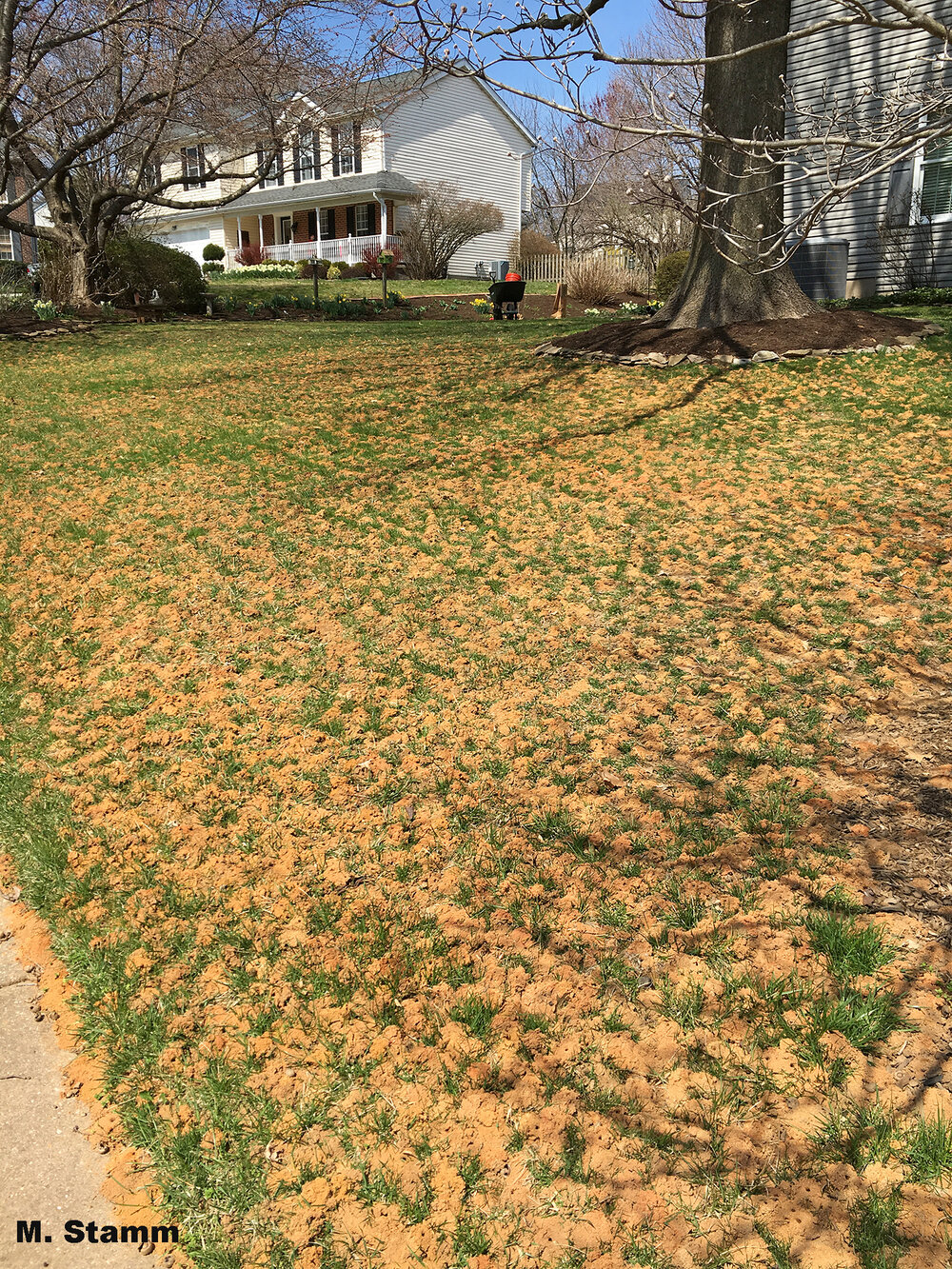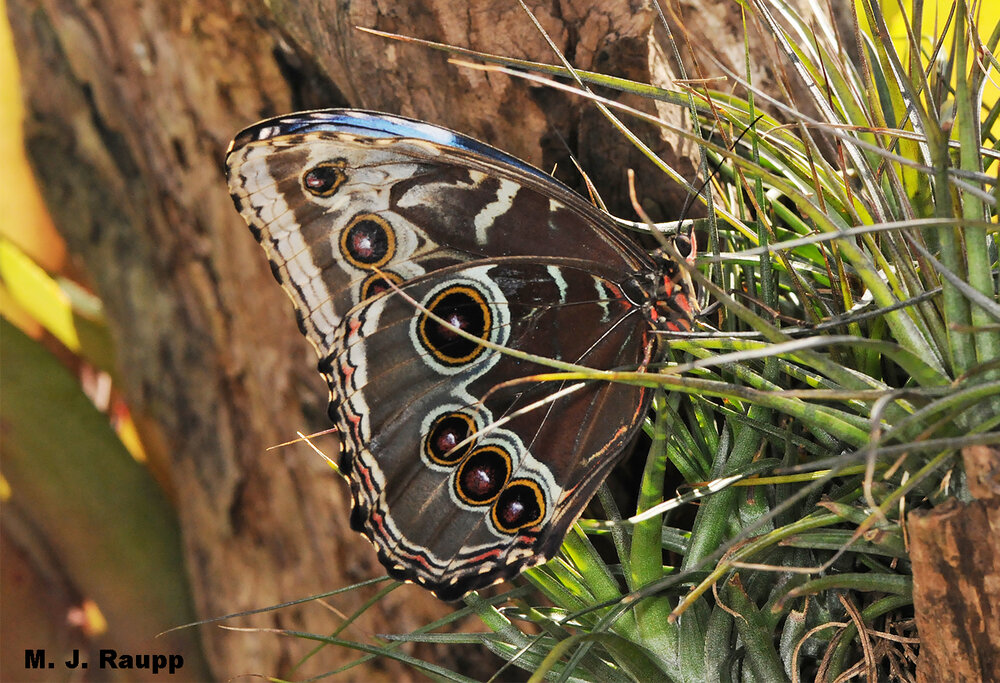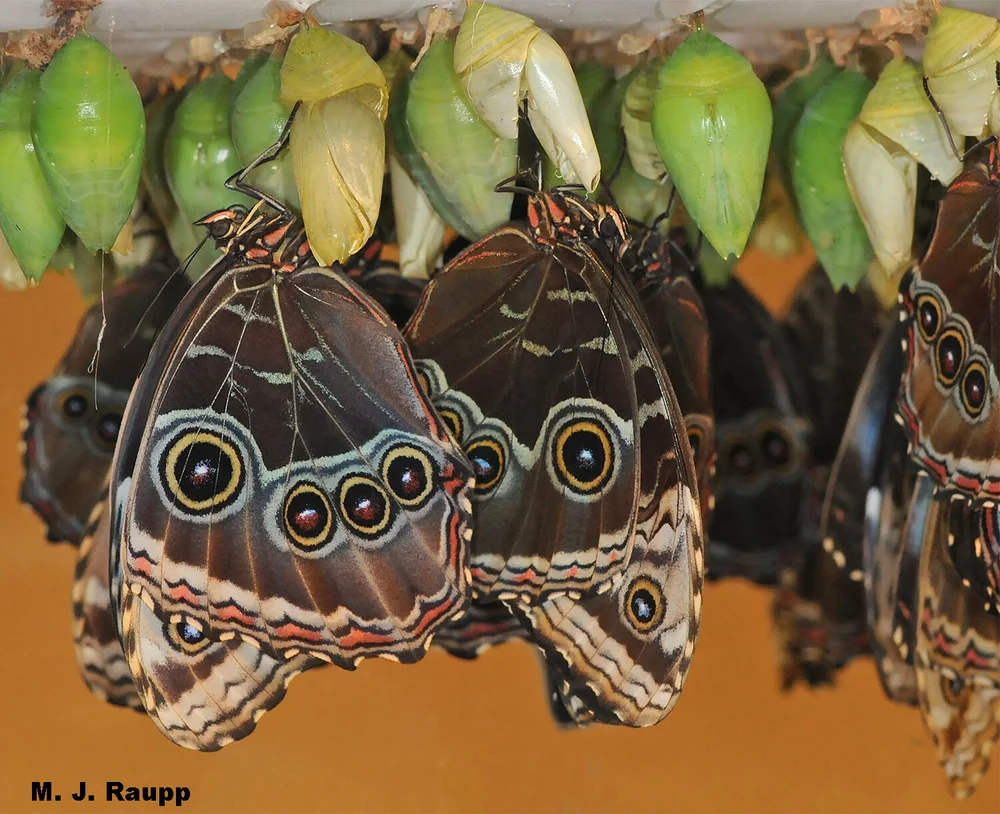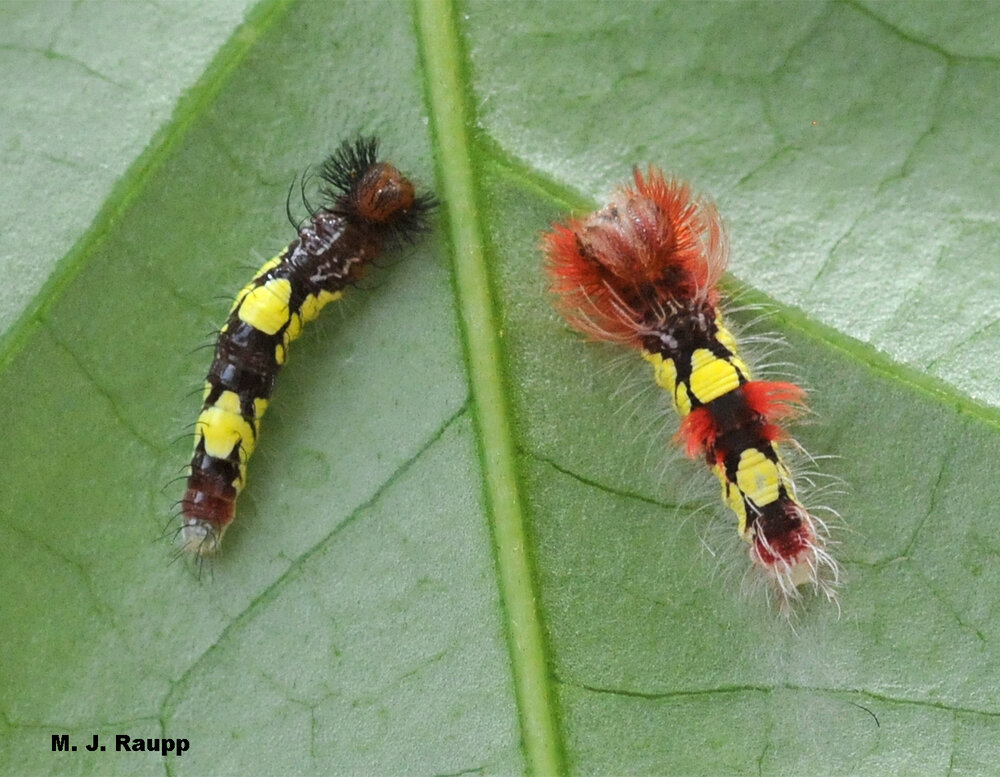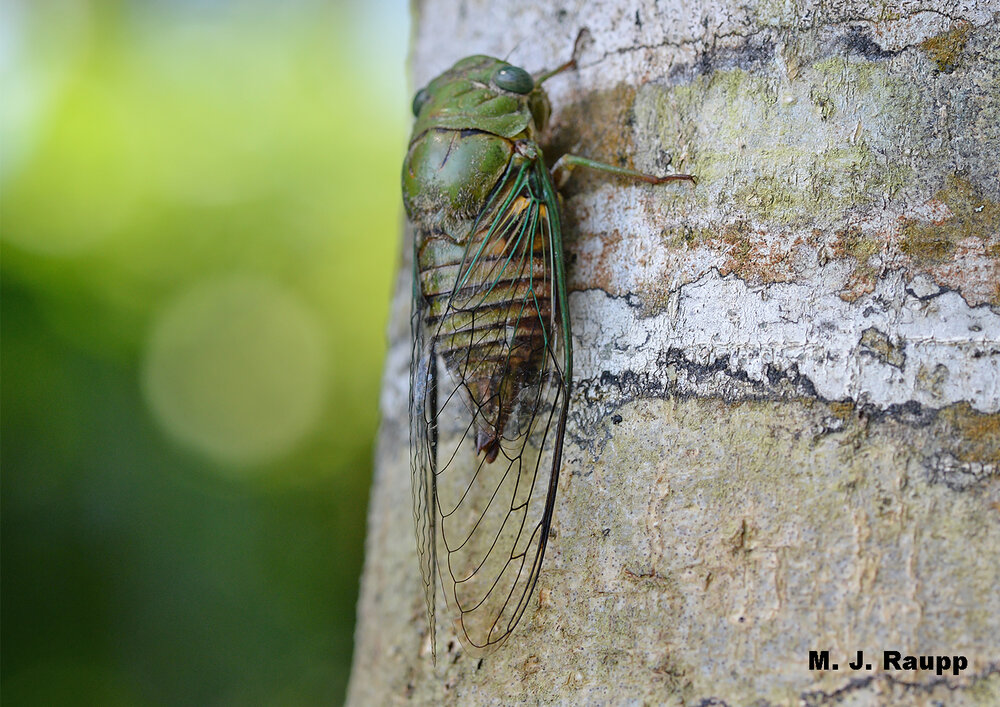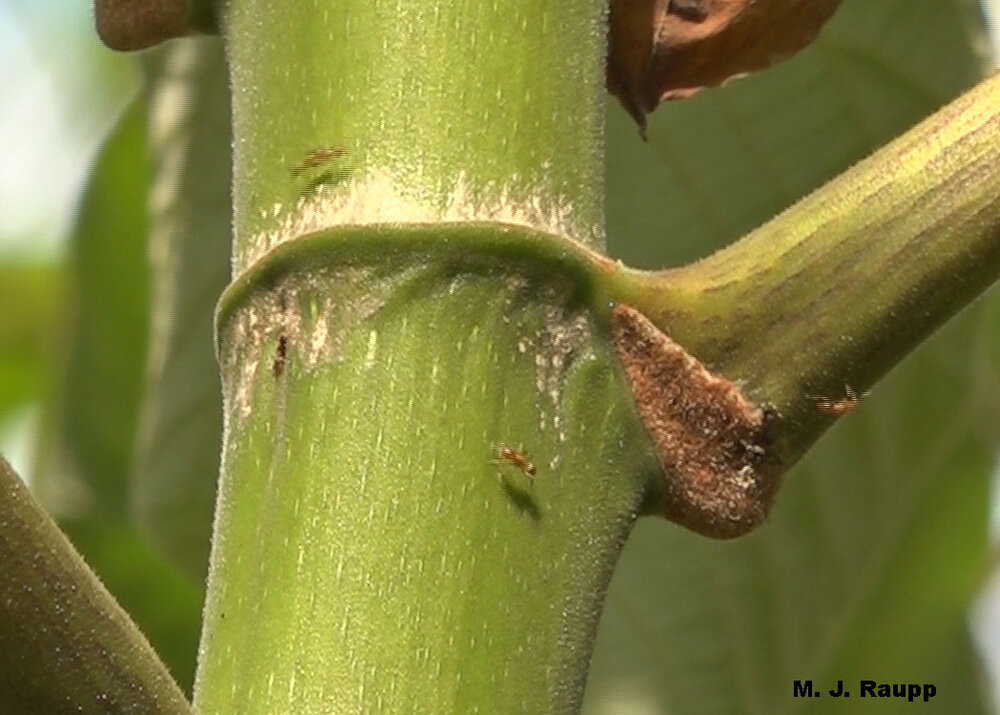The silk trail: Eastern tent caterpillar, Malacosoma americanum
The eastern tent caterpillar is a beautiful beast with blue stripes and patches on the side and a white stripe down the center of the back.
Small and sometimes even large trees may be stripped of leaves by hungry tent caterpillars.
After a relative lull in activity by eastern tent caterpillars in recent years, they seem to be back with a vengeance this season. So, this week we take a peek into the biology of these leaf-munching tent-makers. Just to avoid a bit of confusion, recall that last autumn we met a relative of the eastern tent caterpillar called the fall webworm, as it constructed massive tents on the tips of branches on a wide variety of trees. This week’s rascal is a creature of spring with a fondness for trees in the rose family like cherry, apple, and crabapple. Several weeks ago when forsythia’s bright yellow blossoms announced spring’s arrival, tiny caterpillars hatched from dark brown, Styrofoam-like egg masses in which they had survived winter’s chill. These egg masses were deposited last summer by female eastern tent caterpillar adult moths on small branches of favored hosts. A single egg mass can contain more than 300 hundred eggs. After hatching, larvae build small silken tents over the egg mass and the surrounding branch. From this bivouac they move along branches, spinning silken threads as they go to mark trails to the newly expanding leaves of their host tree, where they feed. Trail marking chemicals called pheromones are deposited by caterpillars on the silken trail to guide nest mates to the location of delectable leaf clusters. As larvae grow during March and April, they need more room and their silken tents are expanded. Tents are typically nestled in the crotch of large branches or where large limbs branch from the trunk.
The saga of the tent caterpillar began six weeks ago when more than 100 tiny caterpillars hatched from their egg mass. So began the daily ritual of following the silk trail from their tent to a meal of tender young leaves, followed by a return trip to the safety of their tent. Fast forward to last week when almost fully grown caterpillars devoured cherry leaves and beat a hasty retreat to their tent as a wicked rainstorm arrived.
Transformation from caterpillar to adult takes place in a white silken cocoon which is often hidden under that loose bark of a dead tree.
Eastern tent caterpillars are rather a chummy lot. Brothers and sisters from the same egg mass often participate in group activities such as communal foraging and enlargement of their remarkable tent. Tents help caterpillars conserve heat and enable the writhing metabolic mass of caterpillars to elevate body temperatures for more rapid growth and development during chilly spring days. Their silken homes may also provide protection from predatory or parasitic insects. These hairy caterpillars have a voracious appetite and can strip even large trees of their leaves when many tents are present. After the caterpillars have completed development, a mass exodus occurs from the tree and the larvae wander the land seeking protected spots beneath logs, leaves, stones, and under man-made structures to spin yellowish or white, silken cocoons. The adult eastern tent caterpillars emerge as moths from their cocoons in June or July, mate and lay eggs back on the small branches of rosaceous trees. These eggs house the next generation of caterpillars that will emerge with the bloom of forsythia next spring.
Managing caterpillars
How do you know if eastern tent caterpillars threaten your trees? The best predictor of a problem next year may be the problem you have this year. The images of this Bug of the Week came from a small stand of wild cherry trees that are perennially infested with eastern tent caterpillars. If you currently have eastern tent caterpillars on your trees and you do not intervene, it’s a pretty safe bet that you will have them again next year. Right now as the caterpillars enlarge their tents and move to the crotches of the tree, tents and their inhabitants can be removed with a gloved hand on a cool day, placed in a bag, and destroyed. The old school remedy of “burning them out”, though dramatic, went out with the storming of Frankenstein’s castle. Flames are very damaging to the bark of a tree and should never be used.
Problems with tent caterpillars in your trees? No worries. Early in the season before eggs hatch, find egg masses on small branches and either crush the egg mass or prune it out and get rid of it. Do the same for small tents later in the season. And if you are really bold, you can simply grab the tent and the caterpillars inside, pull them from the tree, place them in a bag and dispose of them. Boom, problem solved.
Tall trees festooned with tents may be totally stripped of leaves. While trees may recover and produce a second flush of leaves, repeated defoliation probably reduces the vigor of trees. If you have a tall tree from which you cannot safely remove eggs or tents, you may want to seek the help of a professional certified arborist. If you can’t get around to managing eastern tent caterpillars this season, sometime between August of this year and March of next carefully inspect the pencil-sized branches of your infested trees for egg masses and tiny silken webs. The egg masses are easily removed with a pinch of the fingers or, if you are a bit squeamish about touching bugs, simply get out your nippers prune them out, bag them and then dispose of them. Entomologists believe that eastern tent caterpillar populations run in cycles. After a few years of caterpillar plague, natural enemies such as predators, parasitoids, and pathogens reduce tent caterpillars to innocuous levels. Who knows, perhaps next year Mother Nature will send a tent caterpillar relief package and give our trees a break from these noisome creatures.
Acknowledgements
The wonderful book “The Tent Caterpillars” by Terrence Fitzgerald, and “Managing Insects and Mites on Woody Landscape Plants” by John A. Davidson and Michael J. Raupp were used as references for this episode.
This post appeared first on Bug of the Week

